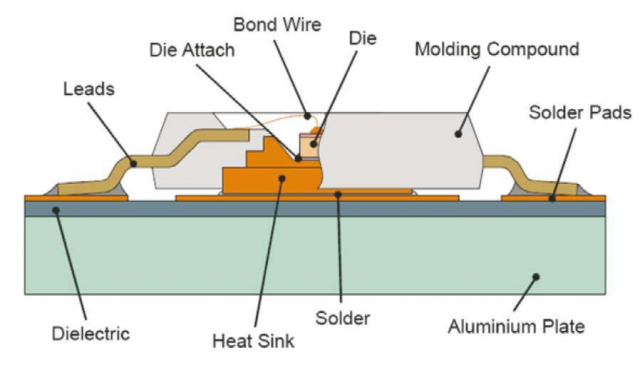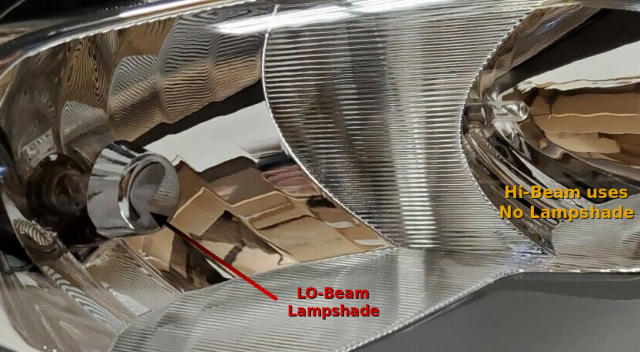In a word, don't!
They don't send a lower voltage to dim the typical tungsten used in those headlights...the older days per my discussion earlier - is describing the way or using methods to lower the amount of power the bulb got when the DRLS system was running. You overrode the system then you turned on your headlights and got full brightness - thru the switch.
The Fiestas of 2011 - per USA models - when they had DRLS options (READ : SES or Titanium trim-lines) they used the standard filament tungsten headlamp...with specific conditions to accomplish that dimmed brightness...
- They use a pulsed voltage - about 100Hz or so - (Square-wave/Sine-wave signal) with a periodic on to off time as a Duty cycle of 50% - which dims the Apparent brightness. They use the DRLS pin on the Body Control Module - having that pulsed voltage - sent to the light - in this case, the Hi-Beams.
- Not both Hi-beams, just the one in the outermost lamp - but used a wire from the pins thru a circuit to do this so it used 12V but in a different way to get expected results.
Newer Fiesta headlights that are LED - have a designated DRLS system that has its own wires in the Light harness to the headlight and are driven by the upgraded BCM module using that Pin the DRLS on the OLDER system would use - but does not go the Hi-Beams - it goes to it's own circuit and in most cases at least by the Aftermarkets I've seen - they have a dedicated light and or use the housing itself for it has the LED's embedded in them that light up to be the DRLS itself - and leave the Headlights - both Hi and Lo beams - LED and operate as their own to make it as transparent as possible to operate the Headlights and work with the AUTO Headlamp function (Daytime DRLS - to Nighttime Headlights on).
Now, if you were to ask me which lights I would recommend - I just won't offer. Why? The stuff that sits on the shelf is not the latest nor is it voted to be the most likely to succeed in being the GO-TO in the fail-proof install. Others that lefft it on the shelf have tried and unless they are built for your vehicle - good luck in making that interface work unless you are good with soldering and understand COB technology.

I've seen the results of some installs and they are epic fails within 3-months if not sooner. And many have had to switch back due to the problems with heating and LED-color fails from White to purple/blue caused by the Epoxy the Cesium-Iodine mixture that they add to make Amber and widen the color range to the output spectrum - it melts or boils - leaving an air pocket and the coating is no longer covering the LED chip giving it a nearly UV appearance in color and light output - not very efficient for nighttime but great for Black Light glo-in-the-Dark stuff if you're into that sort of thing.
So when you go to the new LED, that's fine, but to operate their DRLS - you'll have to inject your own voltages
- - and many times they'd tell you on the package, or supply as a schematic or instruction-sheet to guide you with you being the owner / adapter to own them and operate them, you have to do the work to install and align and mod them as neede to fit your design criteria.
- - unless they are willing to stand behind their work, you're on your own and if they fail - you might get an expensive bill to replace the headlamp back to OEM or forced to spend for the LED upgrade out of your own pocket.
- - or you'll have to make a separate call to their tech support to find out their operation voltage
- - for some units may also include a "guidance" or leveling-system that is motorized to adjust the height of that beam in the light pattern, so it doesn't blind others.
- Other lamp types often provide a hex-wrench or key to help you adjust them by loosening a bolt, to rotate the head-lamp unit to adjust the LED to fit the Foci - step by step - until you have an adequate (does not mean perfect) beam pattern to work with.
- That type of system may wind up having several pins together to make the level and brightness and DRLS system work together with their Logic board as an interface to your BCM module thru the lamps harness. You'd have to splice them in...
Your mission Mr. Phelps...
The LED lamps cannot have large swings in power - they use regulated power drivers in their base to control the brightness - they are fixed Lumen emission - so the brightness does not change even when the running voltage drops to nearly 8 volts - then their built in driver circuit will not work (it cuts out) and no light is emitted - it's also why some have to use a FAN to cool the heat sink used to dissipate the power-conversion from voltage drop and regulation losses generated while in use.
So if you found a 9007 Lamp in LED to replace the ones used as Tungsten - great but the DRLS part is not going to work very well. They won't dim down and will emit a flicker that can get annoying when the DRLS is working. Better to stick with Tungsten and then replace the ENTIRE Headlamp assemblies to LED upgrades as one whole unit for both left and right sides. The all-in-ones are much better and are more integrated with the features you want without having to suffer thru the let-down the typical LED conversions of the headlamps either by H11 or H7 or 9007 - they just can't work like Tungsten in all cases...
Here's just some of the problem...

A Typical Tungsten, or Halogen lamp - the filament is the Foci - so the light is made for the curve of the reflector - the depth and centering - so LED - being a point source already, has several things going against it.
One is dispersion - or how wide it can shine a light and be bright to use - the LED's I see use two sided COB chip designs and some means to "frost" or soften it's light which can if not for the lampshade that Halogen uses - would blind other drivers and on foggy nights make seeing down the road in front of you a nightmare.
The LED becomes the point source for the Foci - but you also have the issue of the heat dissipation - so they use a ventilation system inside the lamp to provide the airflow to cool that lamp - and it's regulation system.
OK, no problem, but the headlamp housing is a sealed design is designed to keep water out. Its sealed and uses only tiny vent holes to drain out water and vent moisture to clear fog from the inside of the lens. Not meant to dissipate large sums of heat from tiny LED's - they do make LED headlamps in housings that correct this, you just can't fully fix this condition in a housing designed for Halogens to be used - at least not without water and dirt entry clouding up the lens. Many have had to remove one or both rubber caps to let the LED conversion lamps ventilate - does not bode well for the housing because now it's vulnerable to dirt and water entry - let alone bugs.
Yes, the Halogen filaments are hot in themselves to a point they can make the glass molten - but glass itself is refined so it won't smoke as badly as the LED epoxy would if it gets as hot or burns out. - they're getting better. But, the smoking of the lens, the protective cover - may still happen and is irreversible - you'll have to install a new lens cap if the LED unit gets too hot and fails. The only other option is to dedicate (meaning BUY the whole Headlamp unit) the lamp to LED and forget about the Halogen to LED upgrade until they've ironed out a lot of details, many don't know about and haven't yet covered.
Many that convert the headlamp to the LED often neglect the problem with that Lampshade - and due to it's size, you cannot remove it easily without deforming the shade - or denting even damaging the reflector - making it worse to use. In some cases - it also can prevent the full seating or sealing insertion you would have with Halogen in the housing to seat the LED and keep its aim correct.
IF you found an LED light to work - again; great. Unfortunately the problems using LED - by size, power consumption and heating produced, the ones I've seen (even the ones we've sold) and what others suffer from and the rest of us are blinded by - usually wind up as junk and are removed and thrown out.
Even Car makers, and resellers at dealerships, are oftentimes forced to remove the headlamps or if not severely disfigured - will revert the lamps back to Halogens just so they can sell it. The lights output, does cause issues with driving you may not be aware of - by color, pattern and the spectrum they emit. It can piss off oncoming drivers and people around you trying to drive and even make the police notice you and even stop you for an R & R due to unsafe blinding condition you cause. Even void warranties - so if you have any extended warranty - they may not replace them with LED but revert back to the older Halogen style the OEM ones were.


